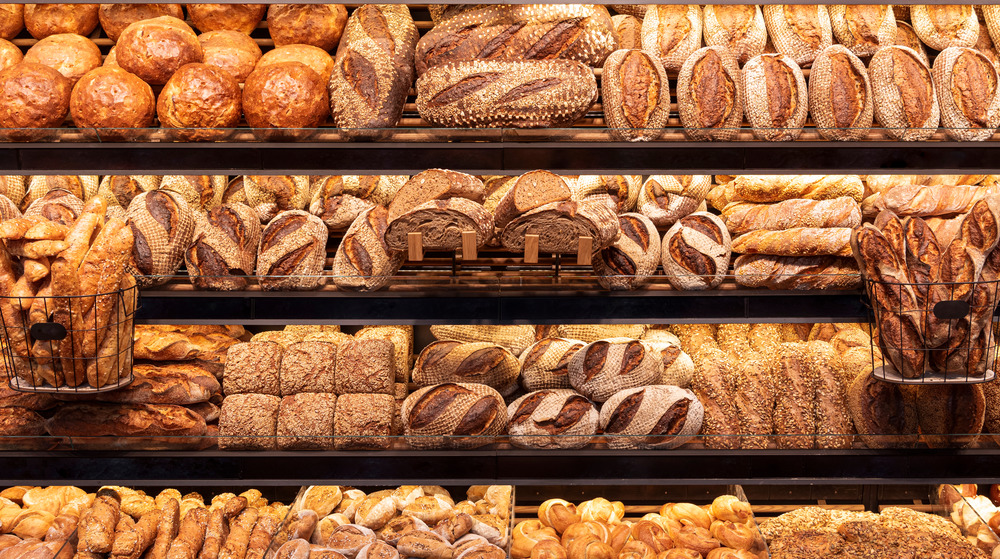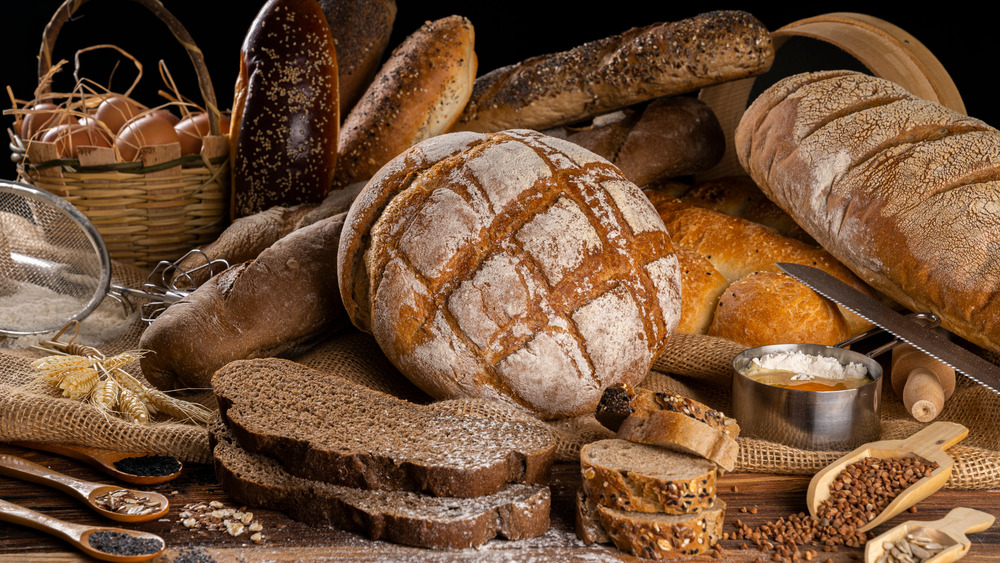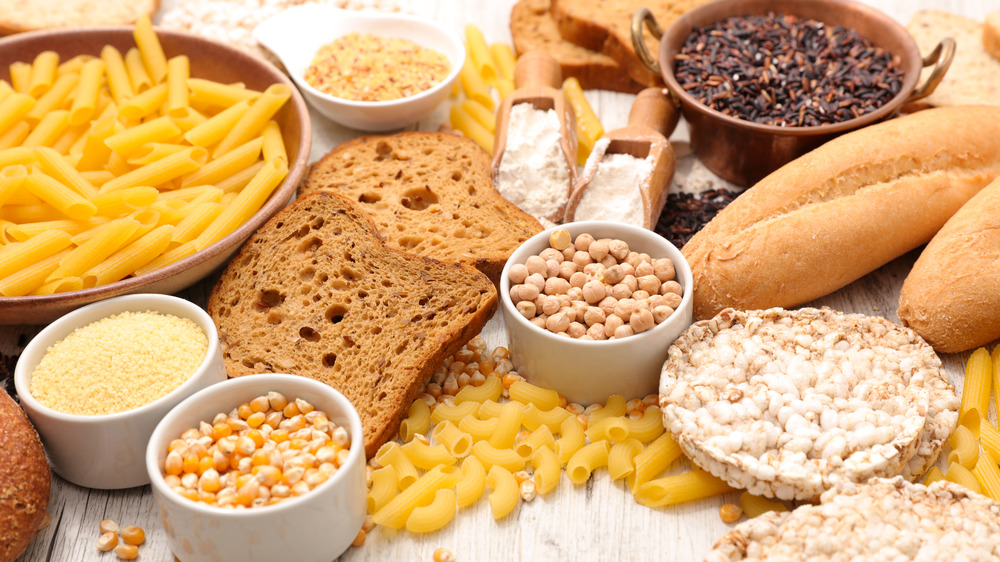The Biggest Mistakes You're Making When Buying Bread
There is nothing as tempting — nor as comforting — as a bread basket with warm, fragrant rolls, or as convenient as a sandwich grabbed as we are rushing off to work. Experts never cease to remind us that our love affair with bread doesn't have to be a guilty pleasure. That's because carbs in general, and different types of bread, in particular, are not all equal. And when selected wisely, carbs, particularly those which are made with whole grain, are an essential component of a healthy daily diet (via WebMD).
But our quest to amp up the number of healthy grains we eat is likely to become a problem if we skim past food labels at the supermarket, and pick up bread that, at first glance, might tick all the right boxes.
Sue Heikkinen, the in-house registered dietitian for the app MyNetDiary, tells Mashed that shoppers often encounter problems when they pick up one thing when they're actually meant to buy something else — like when they mistake bread labeled as "wheat" for "whole wheat."
Bread labels hide more than they reveal
What type of bread should you be shopping for? "100 percent whole-wheat or whole-grain breads are your best choices — they offer more fiber, vitamins, and minerals than breads made from with refined grains. Don't be fooled by breads labeled 'wheat bread' — remember that white flour is indeed 'wheat,' but it is not a whole grain," Heikkinen tells Mashed.
Heikkinen also warns against picking up loaves that have been labeled "made with whole wheat," because these breads could have higher percentages of refined white flour, which is what shoppers should be trying to avoid. "These breads often have more refined white flour than whole wheat flour," she explains.
Shoppers also don't want to be mistaking "multigrain" for "whole grain," because Heikkinen tells Mashed that "multigrain" can mean that a bread is made with more than one grain, but that also doesn't mean that the grains used are, in fact, whole grain. "Again, check the ingredient list to see that the first ingredient is a whole grain such as whole wheat, oats, or rye. You can also check for a stamp from the Whole Grains Council. This voluntary stamp will indicate if a product is made with 100 percent whole grains, or at least 50 percent whole grains," the registered dietitian says.
Going gluten-free can be pricey and unnecessary
There is another pitfall the dietitian warns against, and that's picking up gluten-free bread when your body doesn't actually need it. According to Statista, sales of gluten-free products nearly doubled between 2012 and 2017 — but jumping on the trend isn't necessary for everyone. "Unless you have a medical need, such as celiac disease or gluten-sensitivity, a gluten-free bread may not be your best choice. Gluten-free breads are often higher calorie and higher carb than standard wheat bread, and they usually cost more too," Sue Heikkinen warns.
If you really need to go gluten-free, the registered dietitian says it's best to go to a specialty bakery, especially since "oat" and "potato" breads can actually contain wheat as a main ingredient, and that other grains used to make bread — like rye, barley and spelt — contain gluten too. So if you really need to avoid wheat, Heikkinen tells Mashed that shoppers should go through the ingredient list carefully to make sure they didn't accidentally pick up the wrong type of bread.


